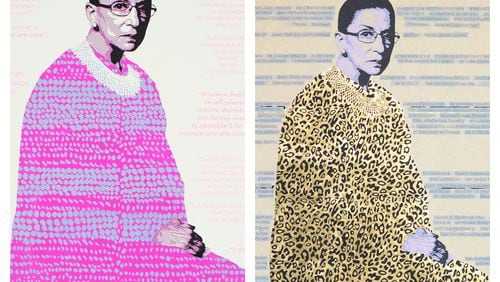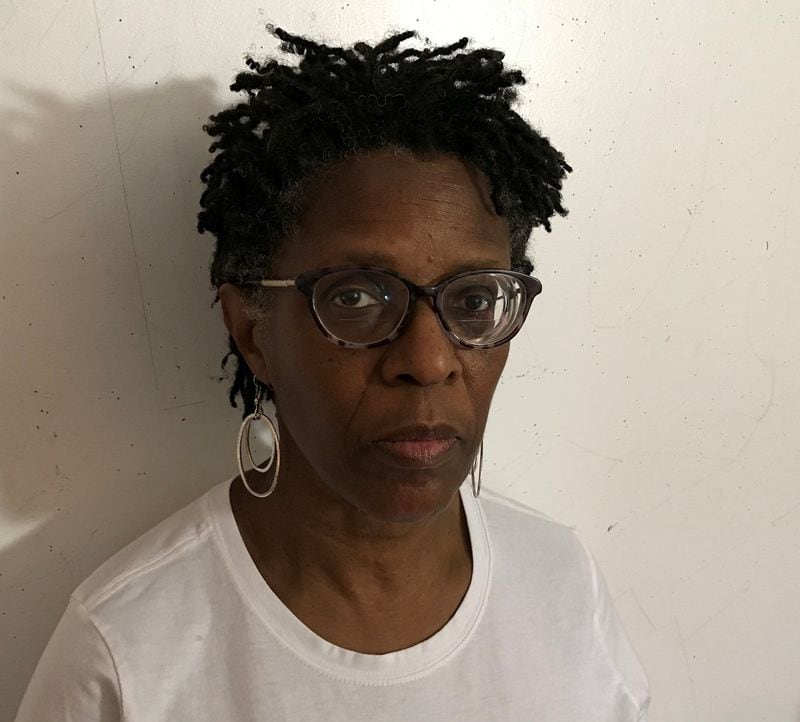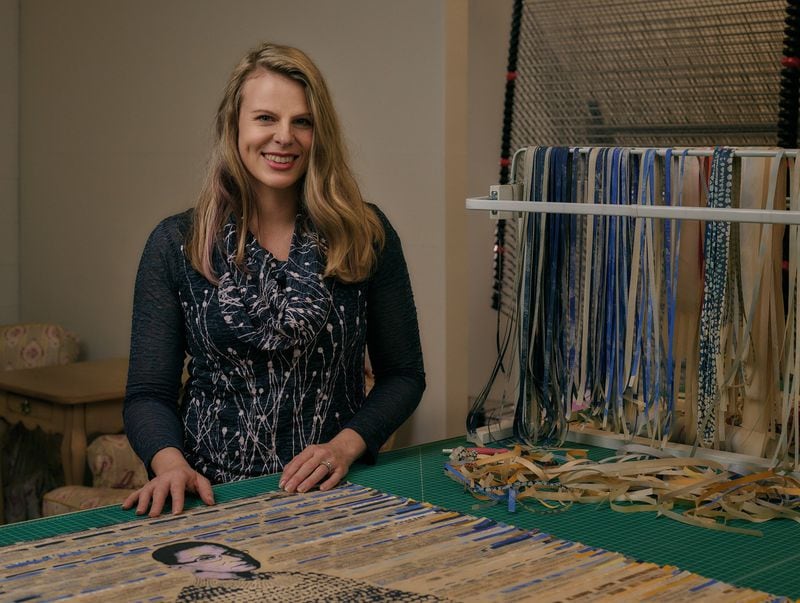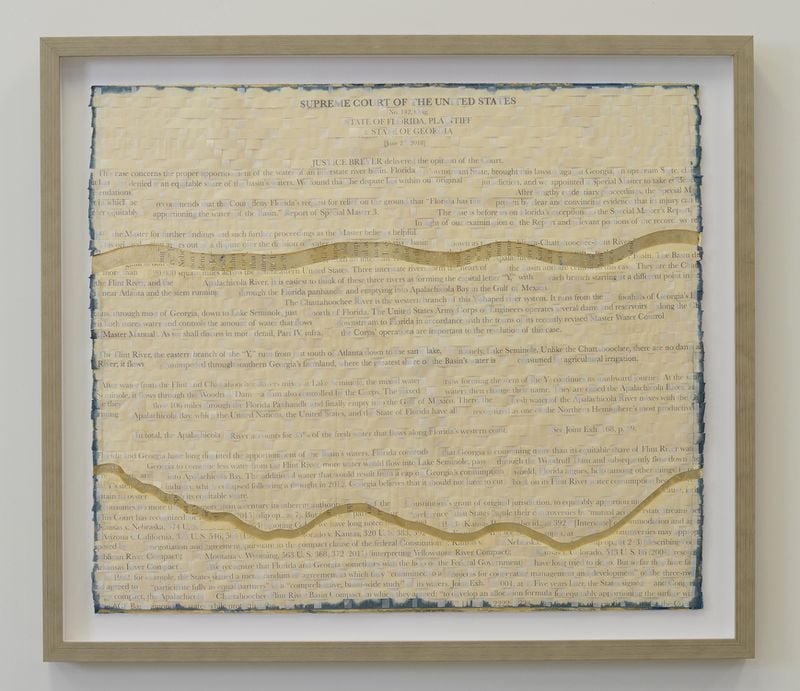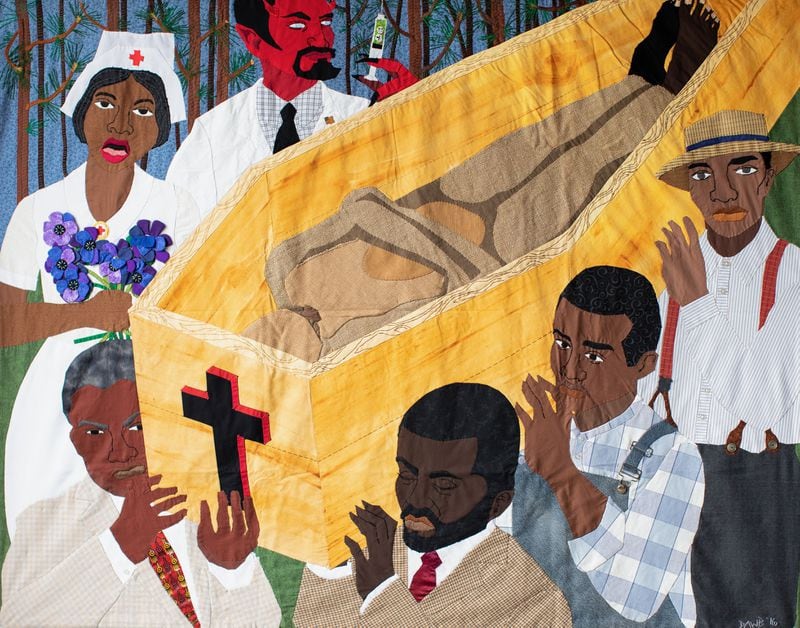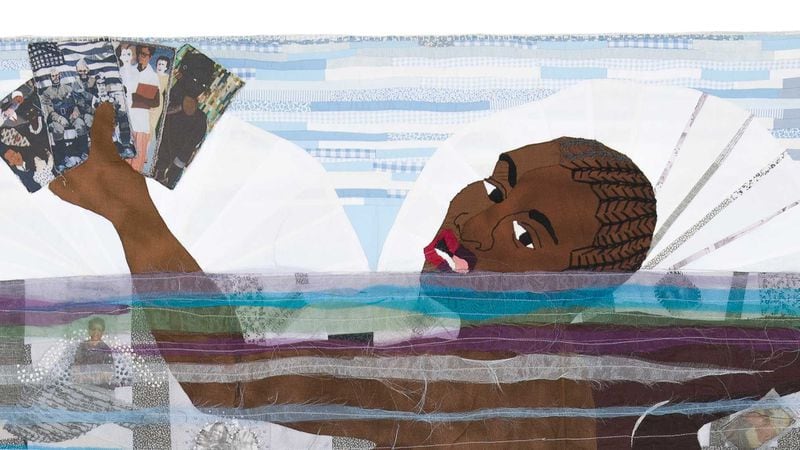For an artist, having your work acquired by the Metropolitan Museum of Art in New York is a signal, but rare, achievement.
Often ranked as one of the top 10 museums in the world, with holdings of more than two million paintings, sculptures, prints, drawings and artifacts spanning 300,000 years BCE to the present, the Met’s collection is as expansive as it is selective. And there is, of course, the highly anticipated annual benefit Met Gala, that draws about as much national attention (and money) to the museum’s costume collection as it does to the celebrities who show up in gowns and costumes tailored to instantly go viral. So, it was with equal measures of pride and disbelief that Atlanta artists Dawn Williams Boyd and Julie Torres greeted the news that the 151-year-old institution had acquired their work a few weeks ago.
In the case of Torres, 41, her screen-print portrait of the late U.S. Supreme Court Justice Ruth Bader Ginsburg was immediately included in the new Met exhibition, “Revolution, Resistance and Activism,” which opened July 29. For Boyd, 69, The Met’s purchase of her piece, “Sankofa,” marked the culmination of decades of telling complex stories about racial injustice, feminism and inequity through cloth paintings reminiscent of quilts. When she got the news, “I felt like jumping up and down,” Boyd said.
Credit: Dawn Williams Boyd, artist, quilter
Credit: Dawn Williams Boyd, artist, quilter
Torres’ and Boyd’s pieces were purchased for an undisclosed sum.
“The Met is one of your dreams and this feels like a dream realized,” Torres said last week.
Credit: Julie Torres
Credit: Julie Torres
Both artists have shows on view locally. Torres is part of the group show “Love Always Wins” at the Maune Contemporary gallery in Buckhead, which has been extended through the end of August. Boyd’s traveling exhibition “Woe,” premieres on Aug. 26, at the Lupin Foundation Gallery at the Lamar Dodd School of Art at the University of Georgia and runs there through Nov. 19.
“Dropped the Phone”
Torres, who grew up in Tallahassee, Florida, is an attorney by training, but five years ago earned a fine art degree in print making at Savannah College of Art and Design. That made two creatives in the family; her husband is multimedia artist Alexi Torres. Some of her early work fused law and printmaking. The 2018 “Water Wars” series depicted the long-running legal dispute between Georgia and Florida over water from the Chattahoochee-Apalachicola-Flint River basin. Florida accused Georgia of decimating its oyster industry by essentially using too much water from the Chattahoochee upstream, thereby restricting the amount of water flowing and nourishing the Florida Panhandle oyster industry downstream. That case was settled earlier this year in Georgia’s favor by the U.S. Supreme Court. Though Torres never worked on the case, as someone reared in the Panhandle she was compelled to render it by blowing up bits of text from a decade’s worth of court transcripts, then painting the bends and twists of the rivers in gold leaf. Printed on multiple canvases, when lined up they form a map of the river basin.
Credit: Julie Torres
Credit: Julie Torres
But it was Torres’ return to the Supreme Court that eventually got her work noticed by the Met. In 2019, she’d created a well-received series of portraits of Justice Ginsburg by weaving strips of paper together to form a grid. Then she printed a picture of the judge, clad in her courtroom robe, staring straight at the viewer. Rather than black, the robe was orange with white speckles or orchid purple with geometric patterns. In the margins, surrounding the image, were quotes from the justice’s opinions and her White House Rose Garden speech when she was nominated to the court. They spoke to the power of the law, but also the potential of women.
As the pandemic forced galleries and art fairs around the country to close in 2020, however, and finding few open brick-and-mortar outlets to sell her work, Torres turned to a platform many artists now rely on, Instagram. For that app, she realized she’d need to create work at a lower price point to attract a wider range of buyers. So, she scaled back the Ginsburg portrait on flat paper in shades of blue and pink ink. Within days of posting it this spring, a collector bought it. That collector had a decades-long tie to the Met and took it to the drawing and print making department to have it framed. It caught the eye of an employee in the department who then called Torres, she said.
“He wanted to know if I had another piece that he could show a curator,” Torres said. “I about dropped the phone. Who expects the Met to call you?”
The curator was enthralled with the image and the museum bought the piece. What surprised Torres was that she then found out the piece was to be included in the “Resistance” exhibition.
“They have like a million pieces in the drawing and print department but the likelihood of (”Super Diva!”) being shown in an exhibition might not even happen in my lifetime,” Torres said. “In the course of a year, not a ton of work gets brought out and shown.”
Now “Super Diva!” will be on view until mid-January at The Met, but the entire exhibition can also be seen virtually.
“YES!”
The final steps in Boyd’s path to The Met came last year when the gallery representing her, Fort Gansevoort in New York, mounted a virtual exhibition of her cloth paintings. While she uses quilting technique, Boyd’s large-scale textiles tell stories of what it’s like, and has been like, to be Black in America. From the Tuskegee experiment to the slaying of Medgar Evers, to the joys of getting ready for a night out on the town with friends, Boyd uses organza, wool, silk and soft cotton to create a record.
Credit: Dawn Williams Boyd, artist, quilter
Credit: Dawn Williams Boyd, artist, quilter
The Atlanta Journal-Constitution profiled Boyd last year during the virtual show. But Kelly Baum, curator in the Modern and Contemporary Art Department, and Sheena Wagstaff, chair of that department, were able to see the show in person. Boyd’s semi-autobiographical piece, “Sankofa,” references her childhood in Atlanta (including her 8th-grade report card) and her subsequent path as an artist.
Credit: Dawn Williams Boyd, artist, quilter
Credit: Dawn Williams Boyd, artist, quilter
“Kelly came in to inspect the work and fell in love with the piece and that’s how the acquisition happened,” said Alja Freier, associate director of Fort Gansevoort.
Boyd got word in mid-June that her piece would join the permanent collection.
“You know how you bend your arms and pull down and say, ‘YES!,’ I felt like jumping up and down,” Boyd said when she got final word.
Subsequently the Birmingham Museum of Art in Alabama acquired her cloth painting, “The Three Marys.” Only two museums in Georgia have Boyd’s work in their permanent collections, The Columbus Museum and the Omenala Griot Afrocentric Teaching Museum and Event Center, established by Boyd’s mother, Narvie Williams Puls, in Atlanta’s West End.
Torres and Boyd are working on new pieces for upcoming exhibitions, excited for what the future holds.
“This truly has changed my life,” Torres said.
ART EXHIBITIONS
“Love Always Wins,” which includes work by Julie Torres
11 a.m.-5 p.m. Tuesdays –Saturdays. Through Aug. 21. Maune Contemporary, 747-A Miami Circle, Atlanta. 678-705-4735, maune.com/exhibitions.
Dawn Williams Boyd’s ”Woe”
8 a.m.-4:45 p.m. Mondays-Fridays; every 3rd Thursday, open until 9 p.m. Aug. 27-Nov. 18. Lupin Foundation Gallery at the Lamar Dodd School of Art at the University of Georgia, 270 River Road, Athens. art.uga.edu/dodd-galleries.
About the Author
